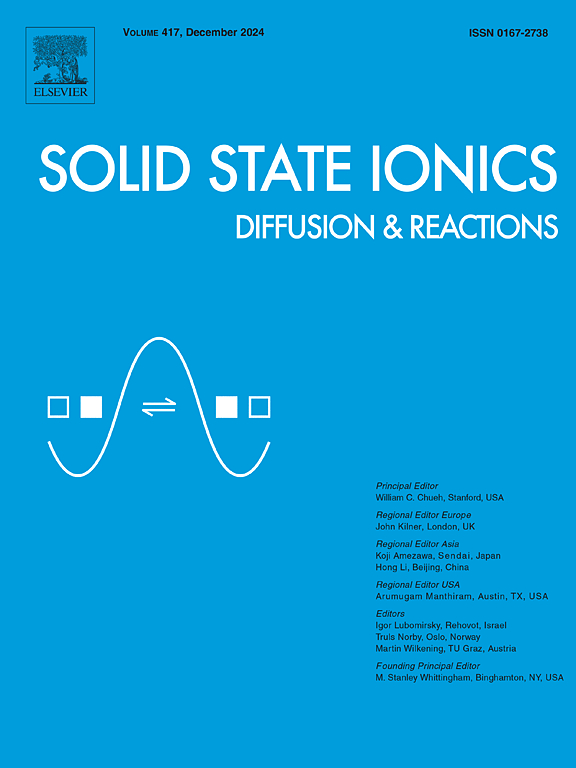Unveiling the relationship between packing fraction, elastic properties, and ionic conductivity in highly modified alkali-borate glasses
IF 3.3
4区 材料科学
Q3 CHEMISTRY, PHYSICAL
引用次数: 0
Abstract
The ionic conductivity of glasses can be understood through the Anderson and Stuart model, in which the process's activation energy is divided into two parts — the binding and the strain energies. In turn, the strain energy mostly depends on the glass's elastic properties, which can be related to the packing fraction according to the Makishima and Mackenzie model. In this work, the possible dependency between packing fractions, strain and ionic conductivity activation energies were studied for lithium and sodium borate glasses containing high alkali-oxide concentrations. A linear dependency was found for compositions up to ≈ 33 mol% alkali oxide, a composition known from the boron anomaly model. This result reinforces the strong electrolyte behavior of the glass up to ≈ 33 mol% concentration for both systems with an activation enthalpy of 0.6 eV while indicating a significant change in the charge carrier's behavior. Strain energy prediction fails for large amounts of alkali oxides, indicating other factors besides the elastic property are involved in the ionic conductivity of the highly modified glasses.
揭示高改性碱硼酸盐玻璃中填料分数、弹性性能和离子电导率之间的关系
玻璃的离子电导率可以通过Anderson和Stuart模型来理解,在该模型中,过程的活化能分为结合能和应变能两部分。反过来,应变能主要取决于玻璃的弹性特性,根据Makishima和Mackenzie模型,这可能与填充分数有关。本文研究了含高碱氧化物浓度的硼酸锂玻璃和锂玻璃的填料分数、应变和离子电导率活化能之间可能存在的关系。在高达≈33 mol%的碱氧化物(硼异常模型中已知的成分)中,发现了线性依赖关系。这一结果强化了玻璃的强电解质行为,两种体系的活性焓均为0.6 eV,浓度高达≈33 mol%,同时表明载流子的行为发生了显著变化。对于大量碱氧化物,应变能预测失败,表明除弹性外,还有其他因素影响了高改性玻璃的离子电导率。
本文章由计算机程序翻译,如有差异,请以英文原文为准。
求助全文
约1分钟内获得全文
求助全文
来源期刊

Solid State Ionics
物理-物理:凝聚态物理
CiteScore
6.10
自引率
3.10%
发文量
152
审稿时长
58 days
期刊介绍:
This interdisciplinary journal is devoted to the physics, chemistry and materials science of diffusion, mass transport, and reactivity of solids. The major part of each issue is devoted to articles on:
(i) physics and chemistry of defects in solids;
(ii) reactions in and on solids, e.g. intercalation, corrosion, oxidation, sintering;
(iii) ion transport measurements, mechanisms and theory;
(iv) solid state electrochemistry;
(v) ionically-electronically mixed conducting solids.
Related technological applications are also included, provided their characteristics are interpreted in terms of the basic solid state properties.
Review papers and relevant symposium proceedings are welcome.
 求助内容:
求助内容: 应助结果提醒方式:
应助结果提醒方式:


